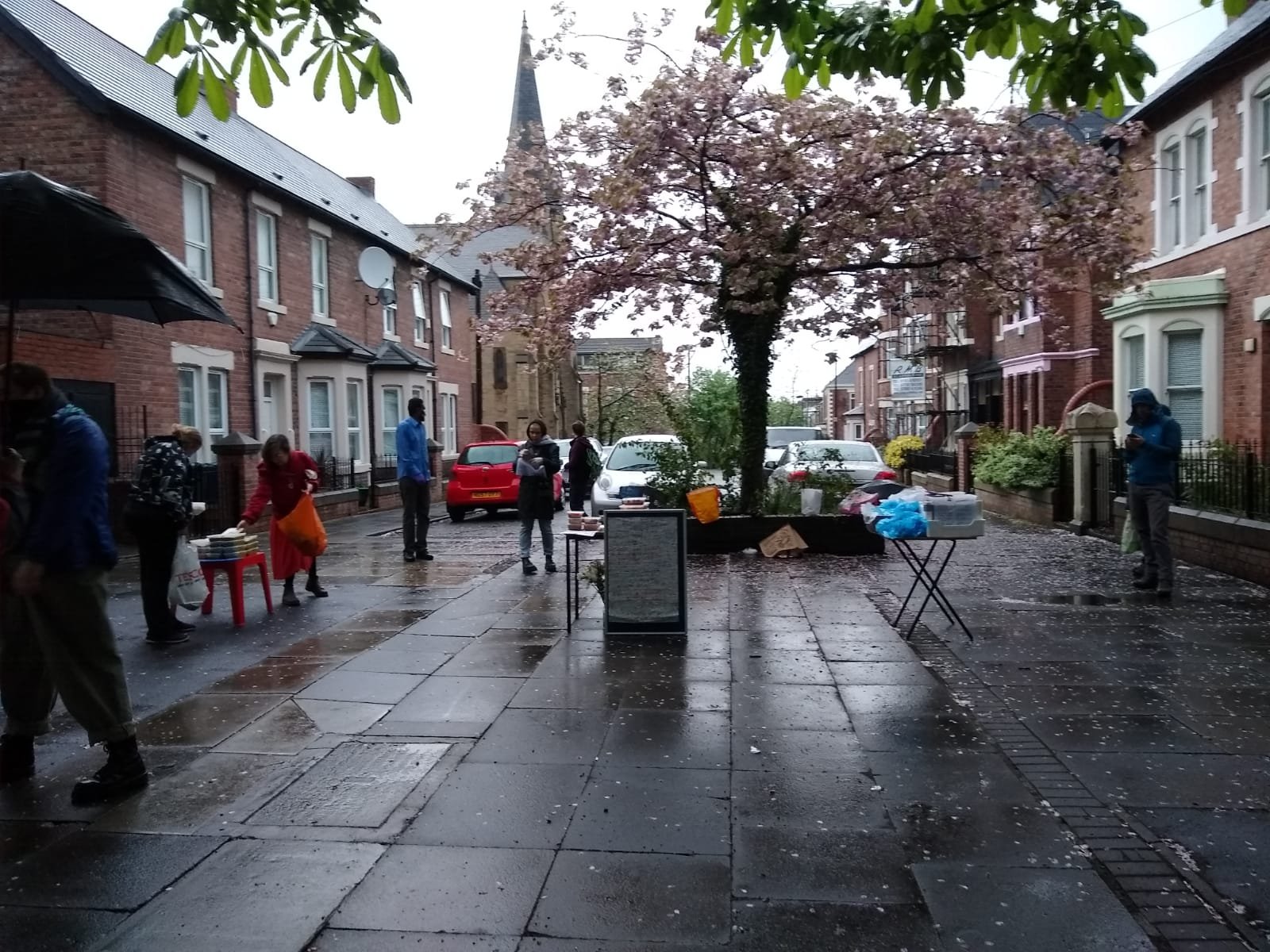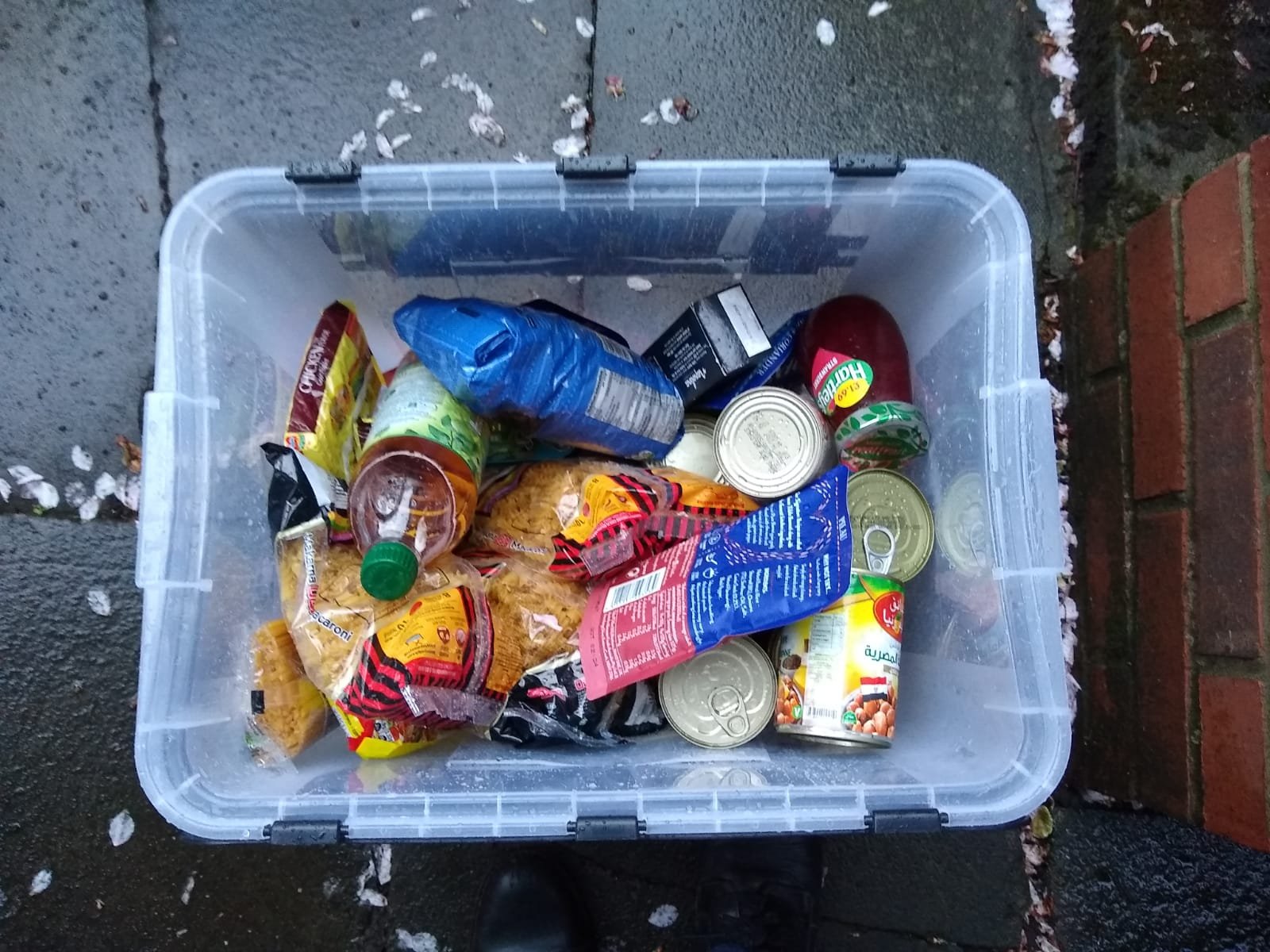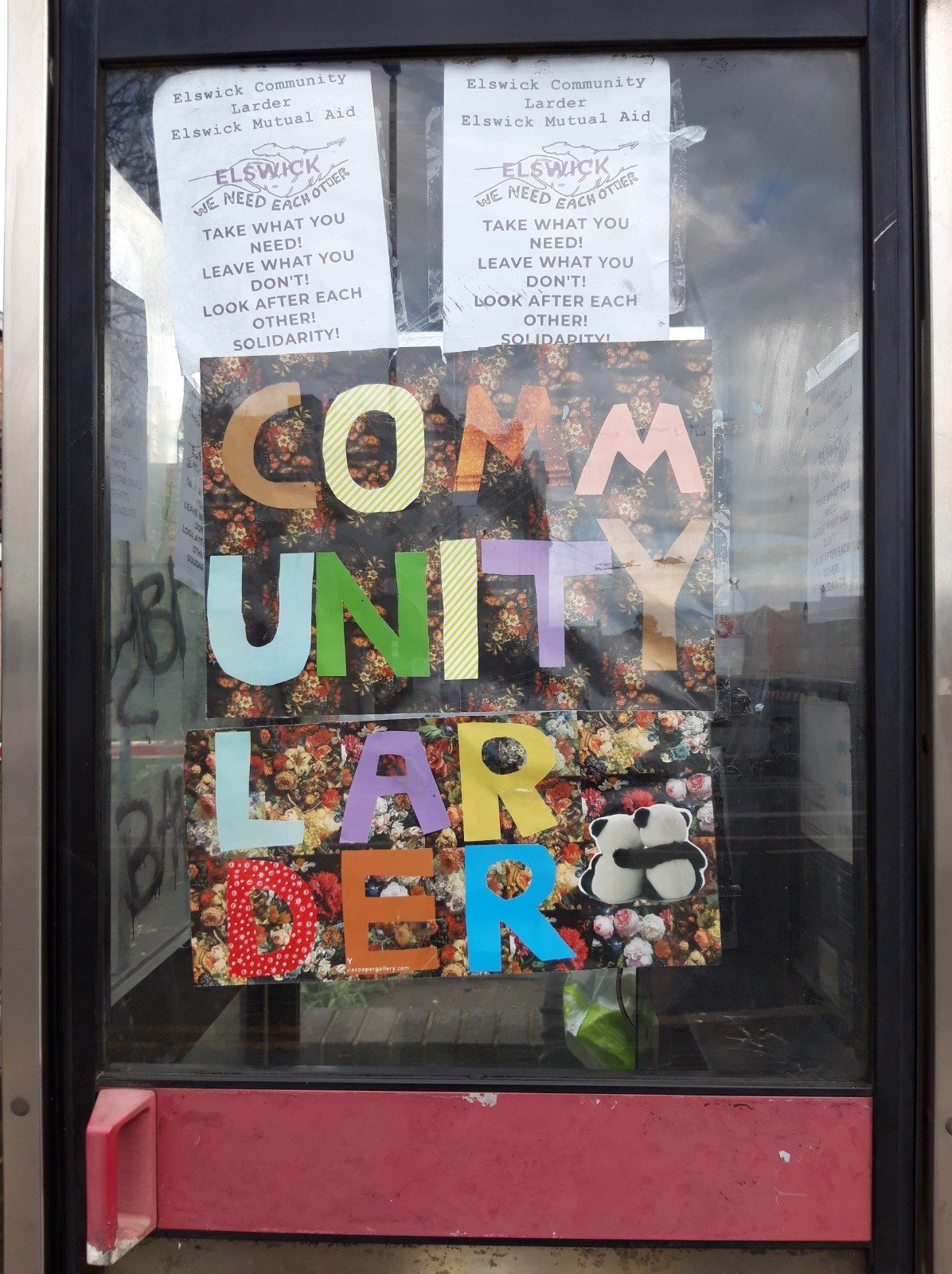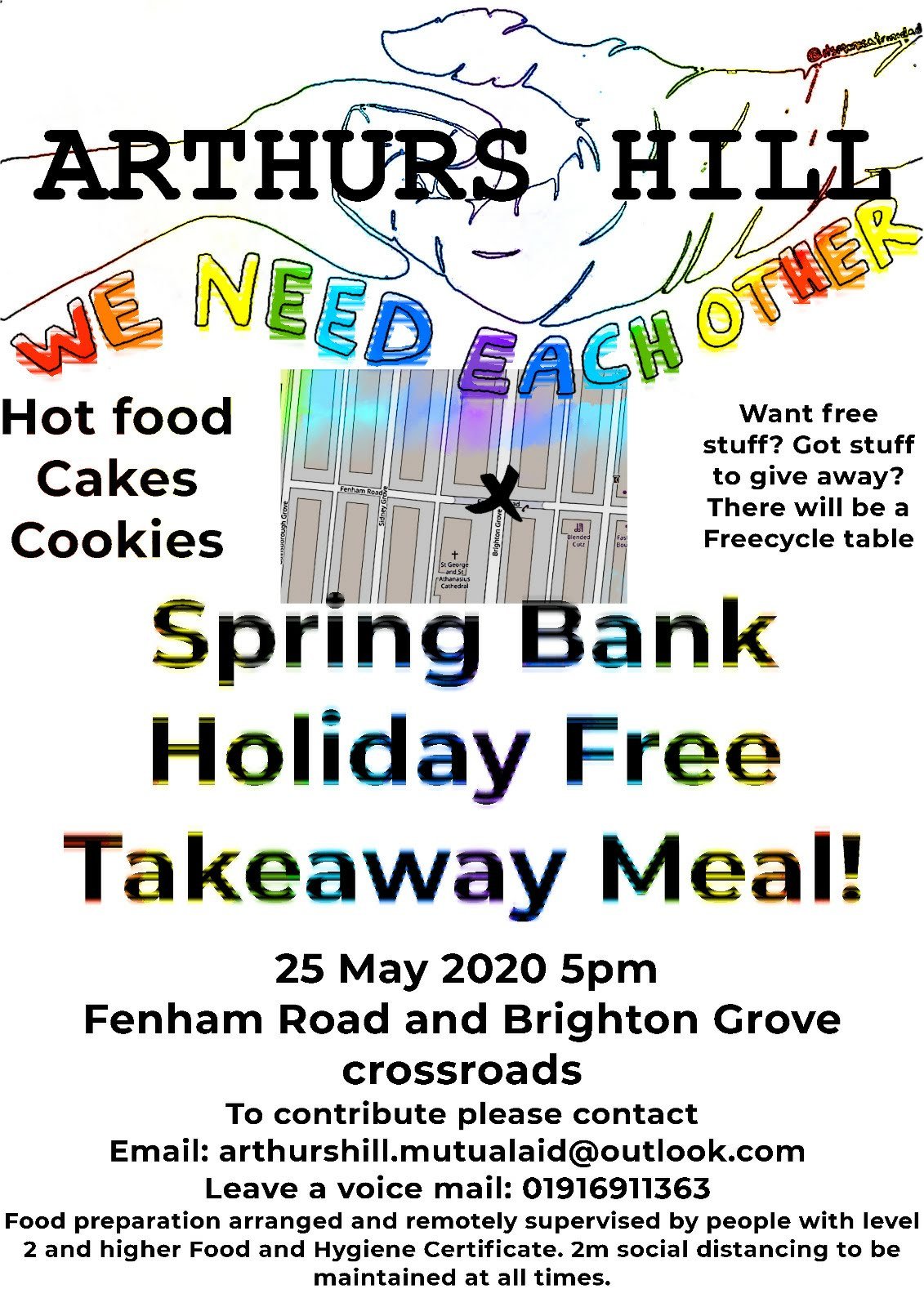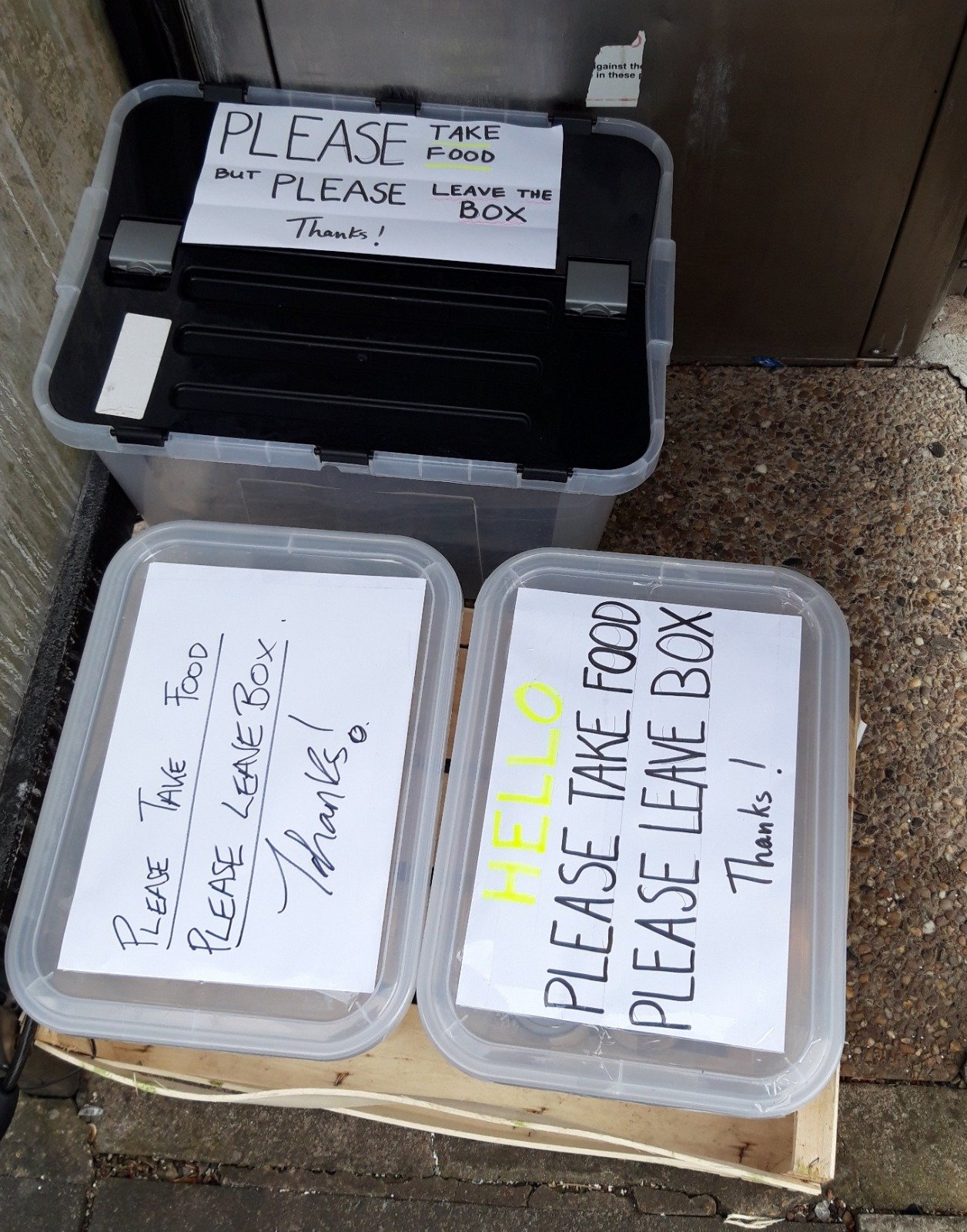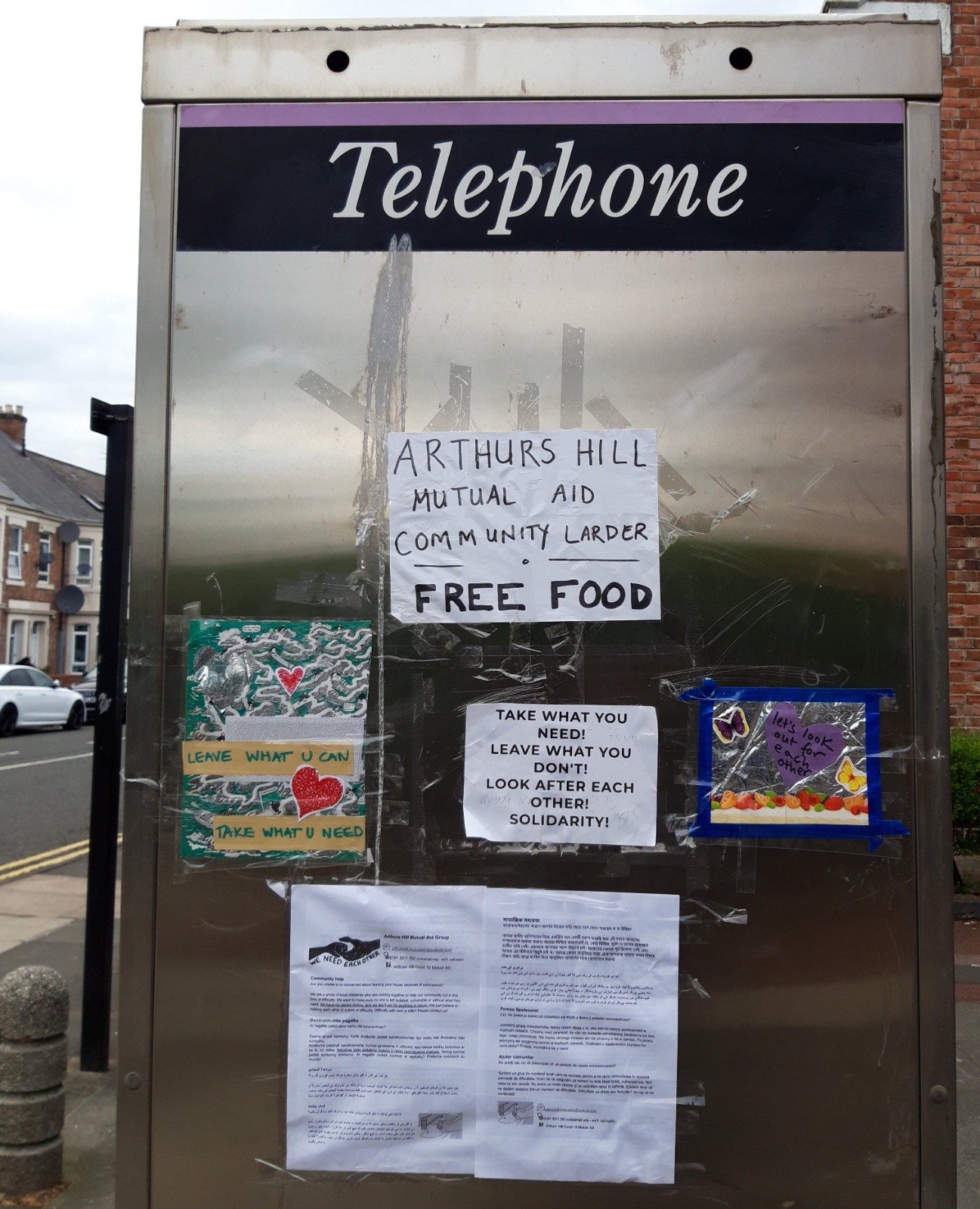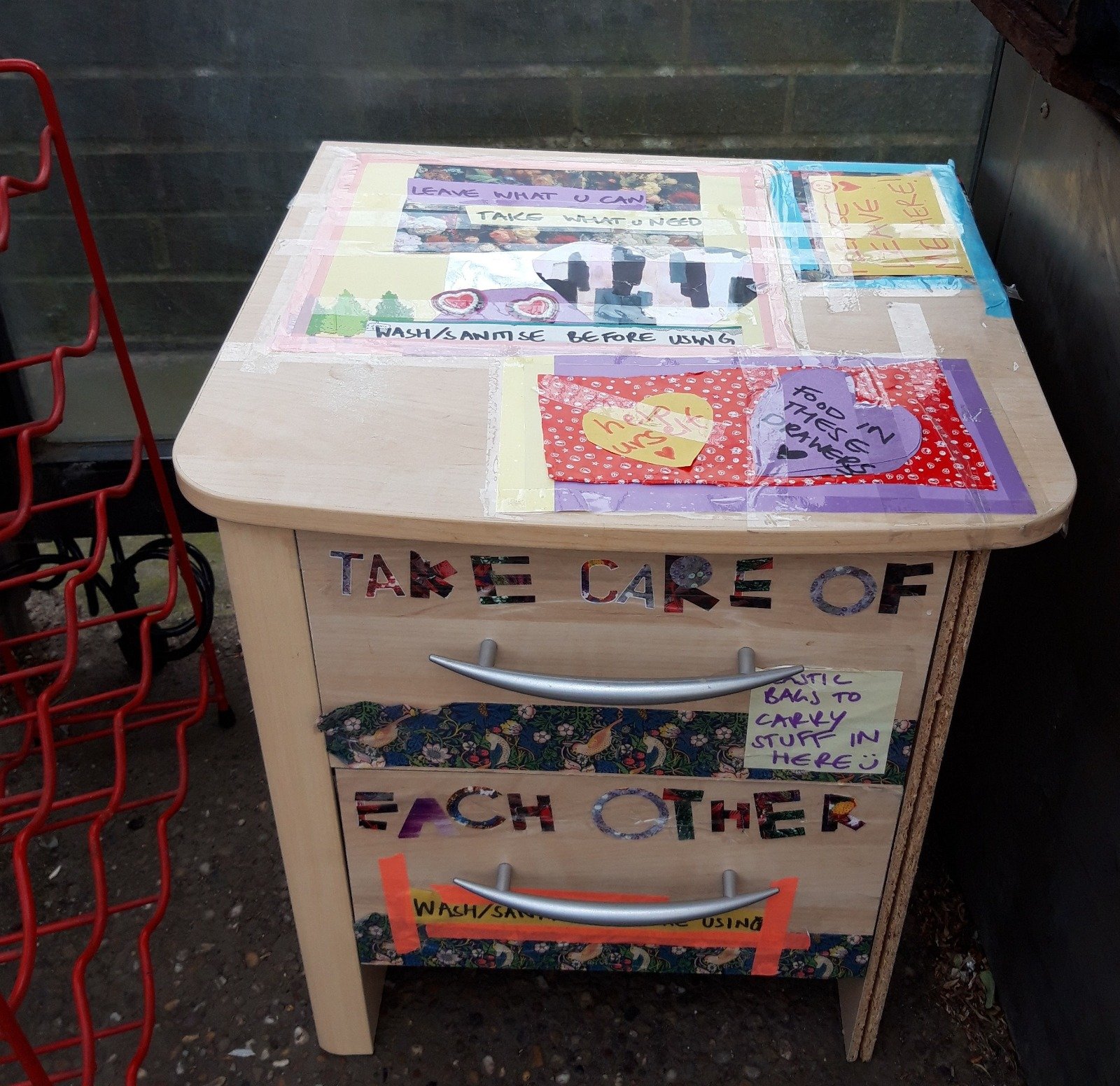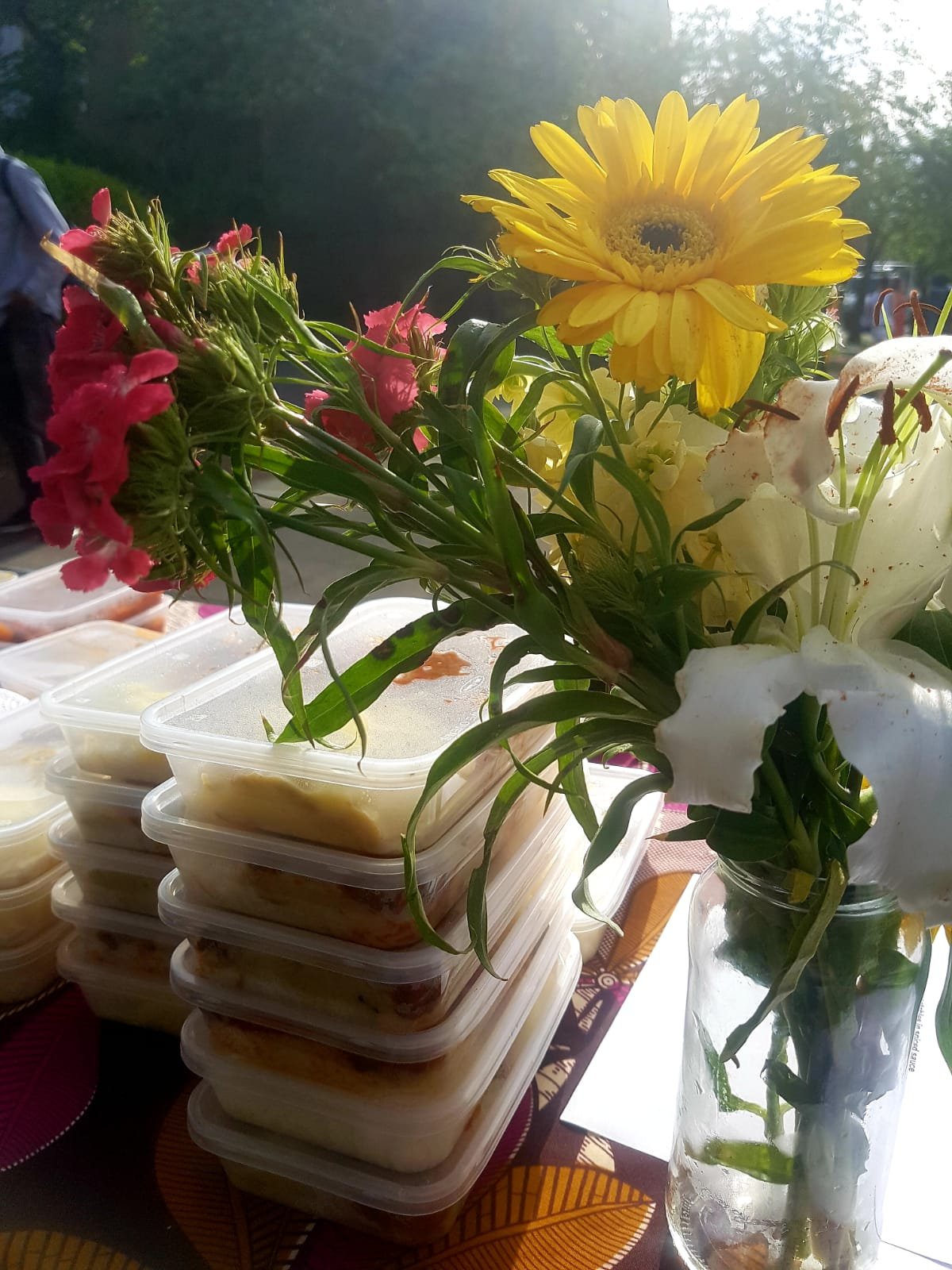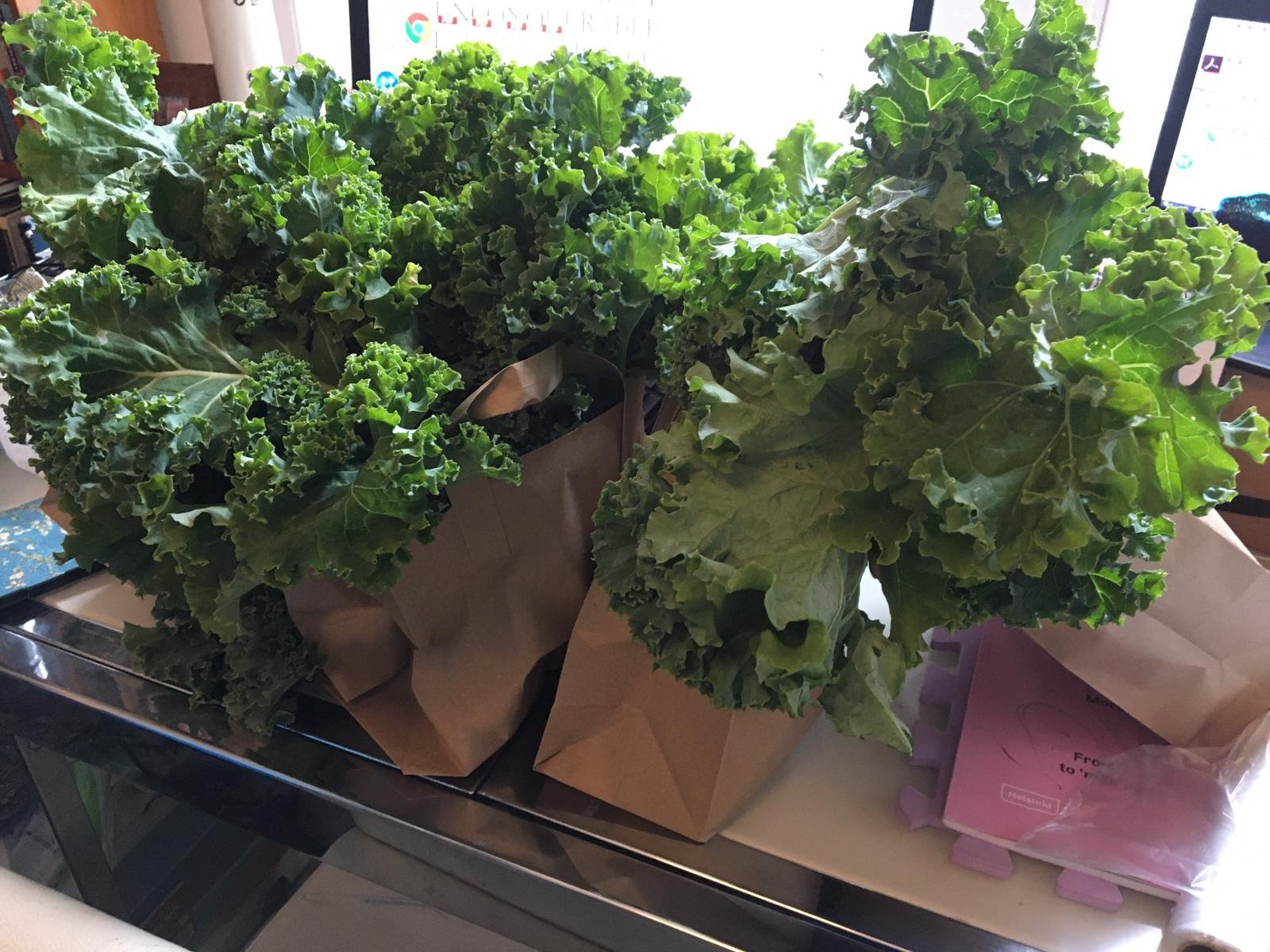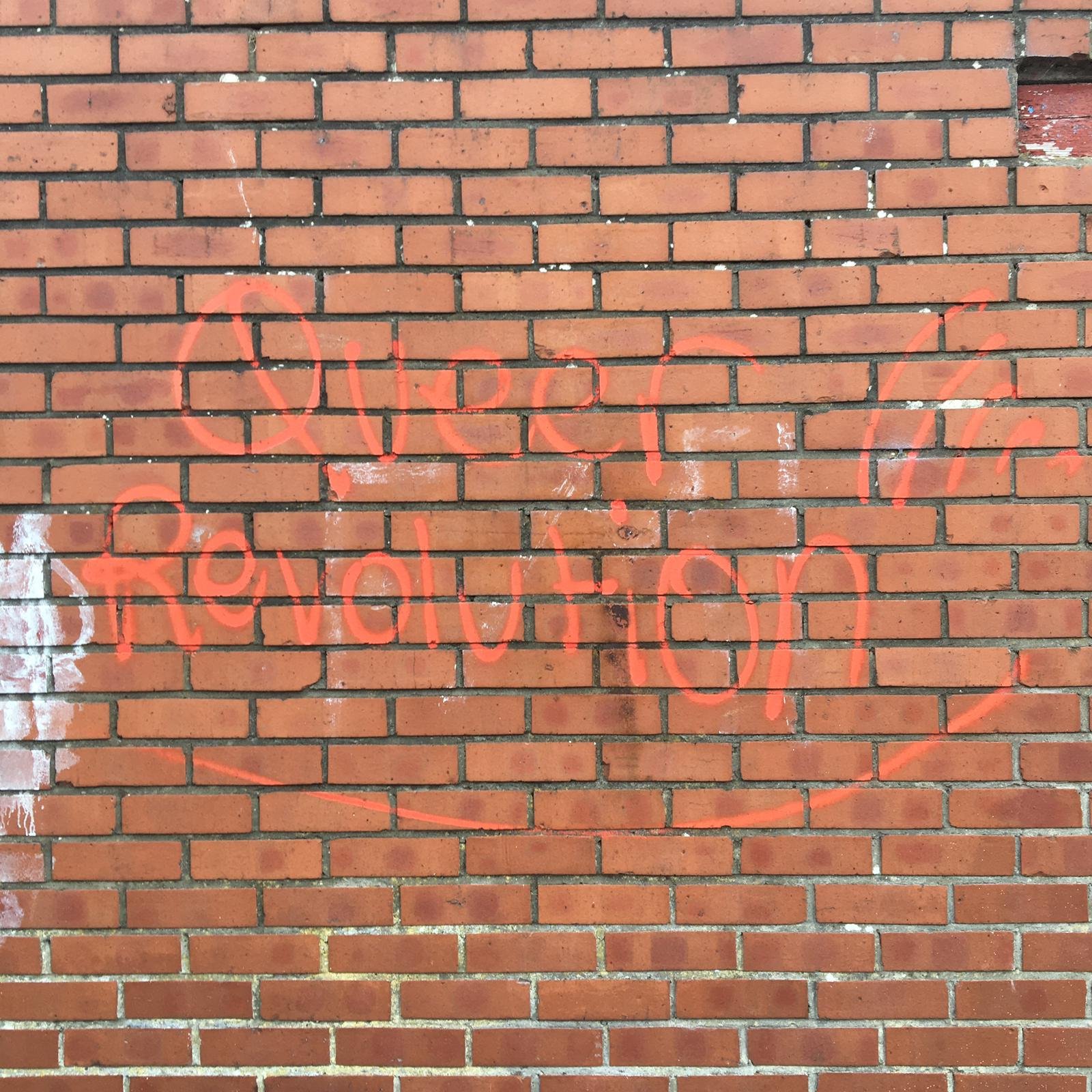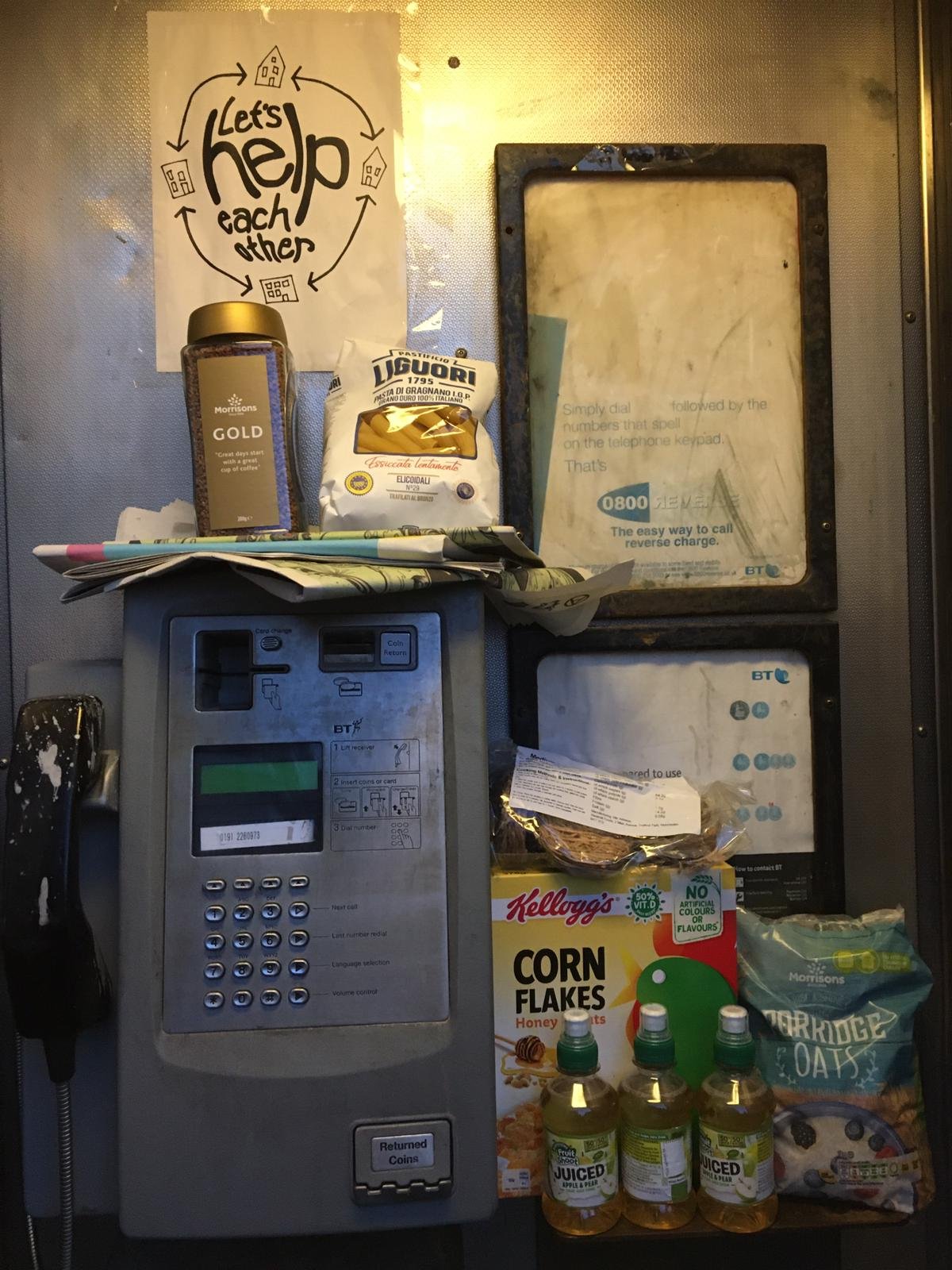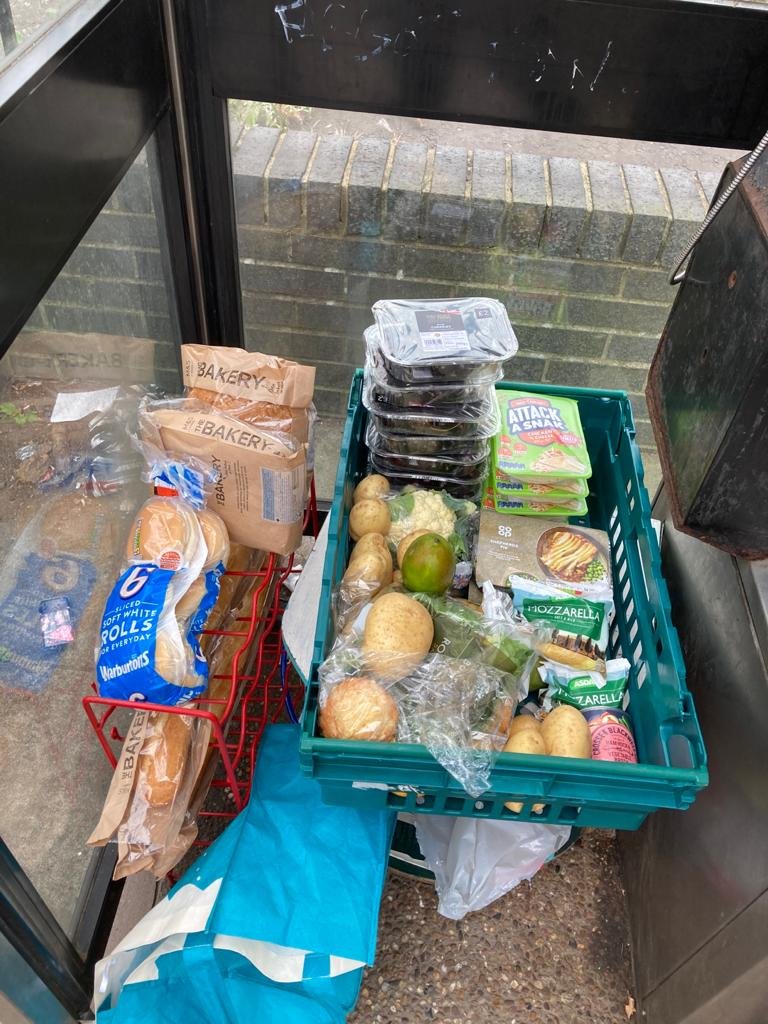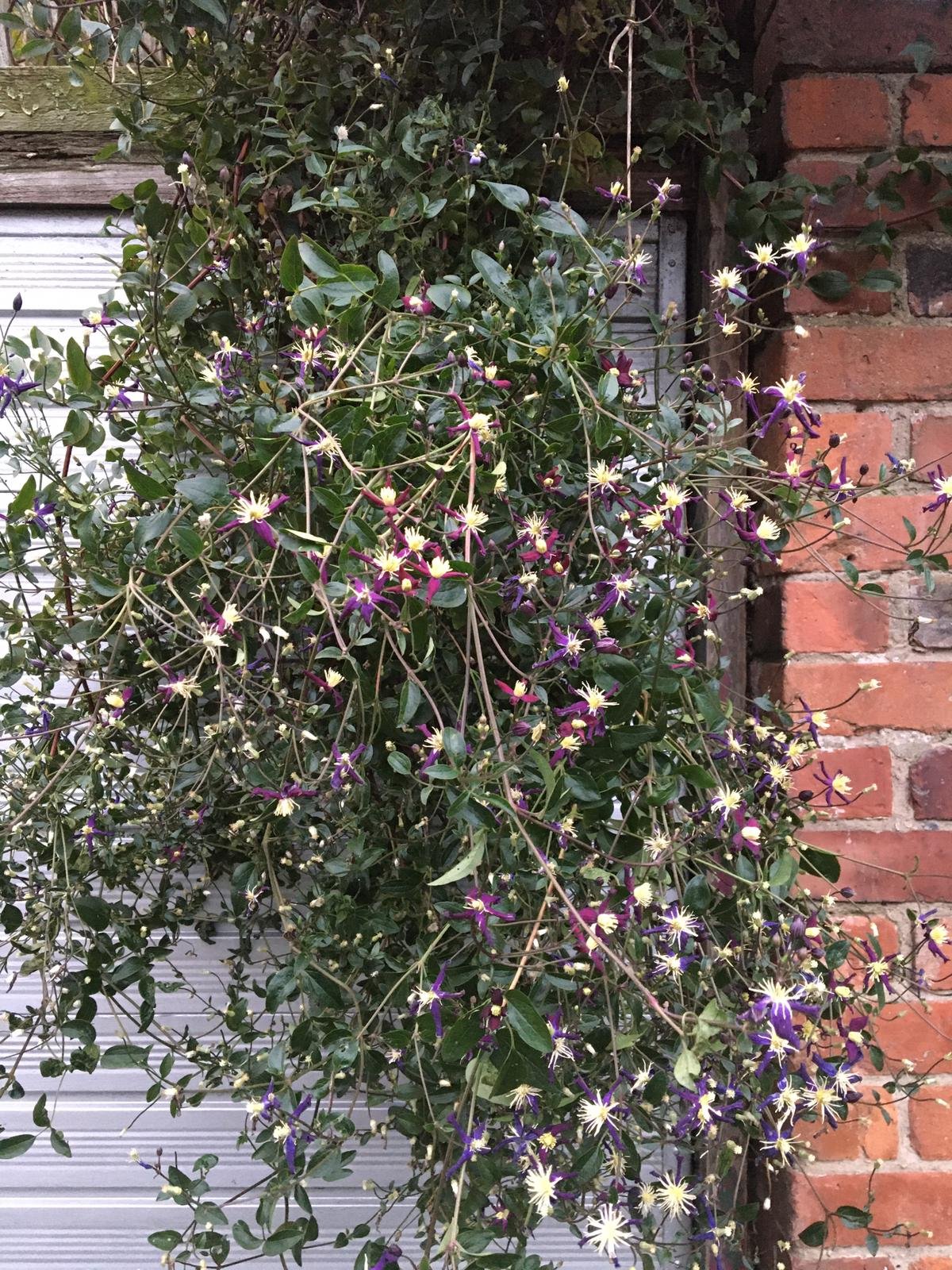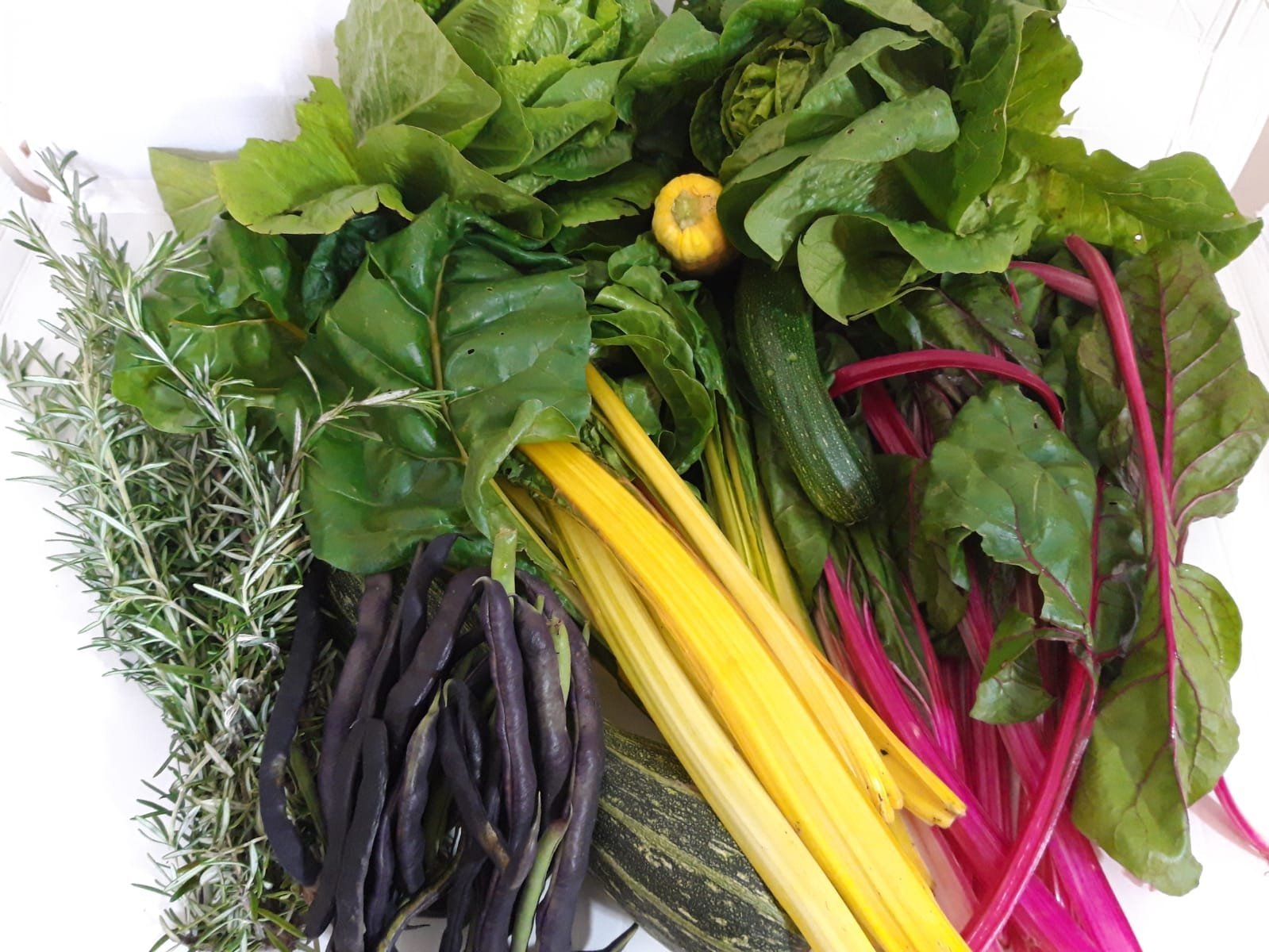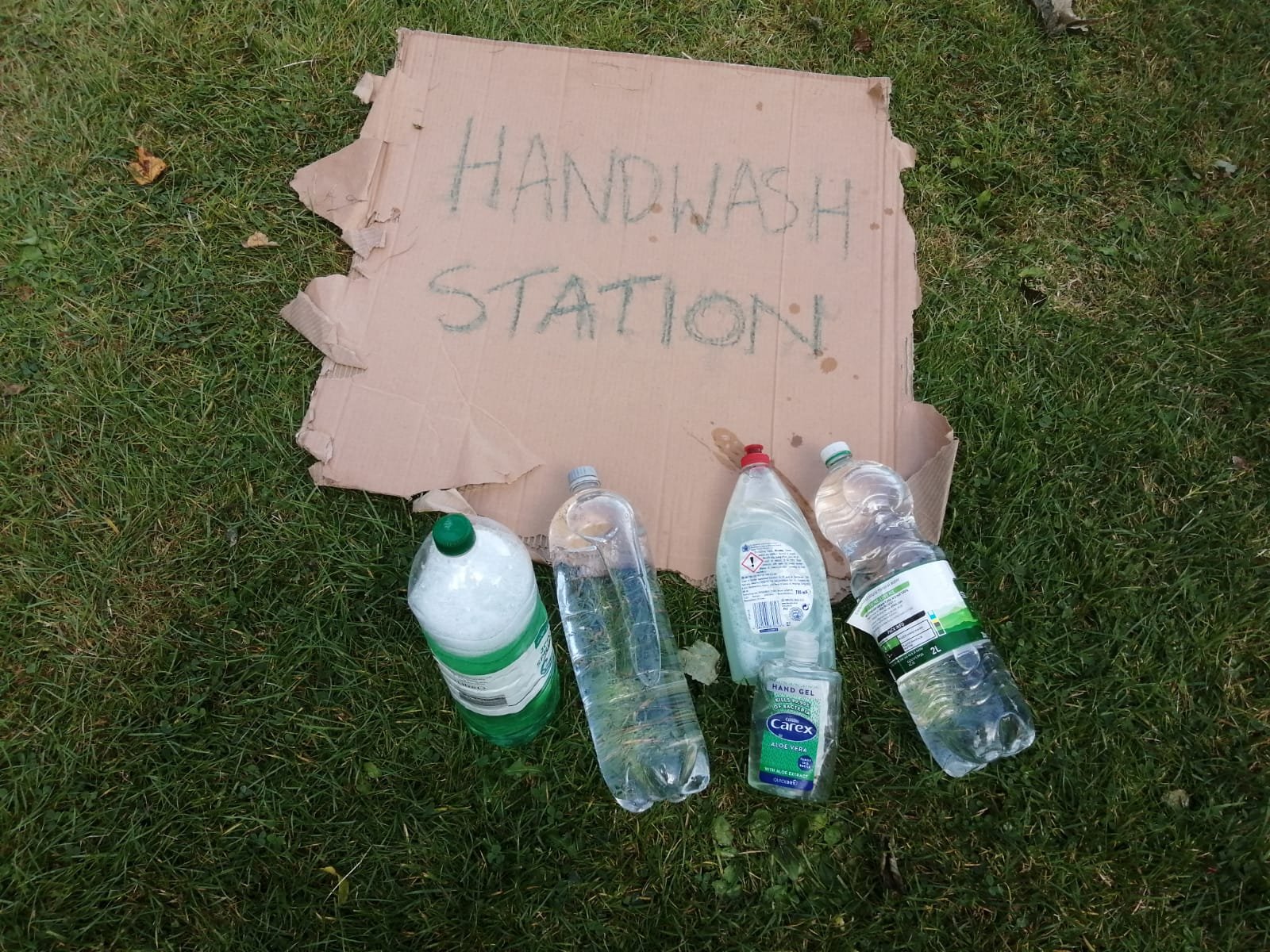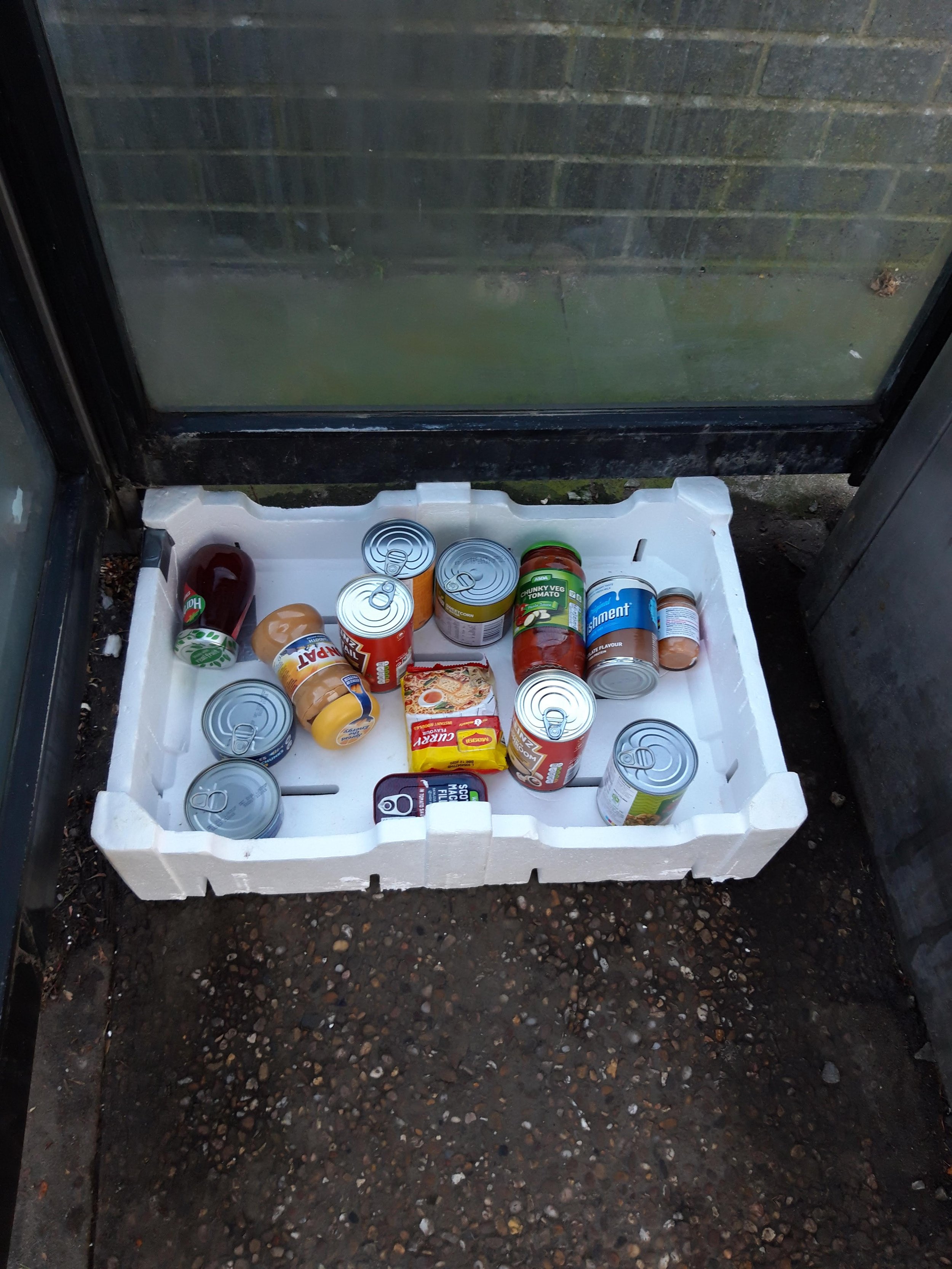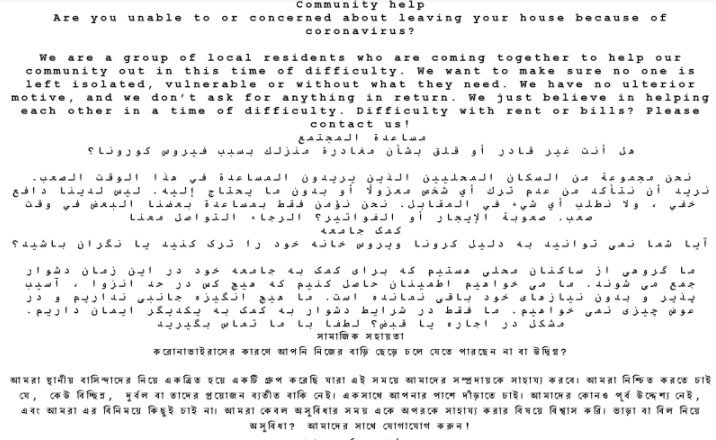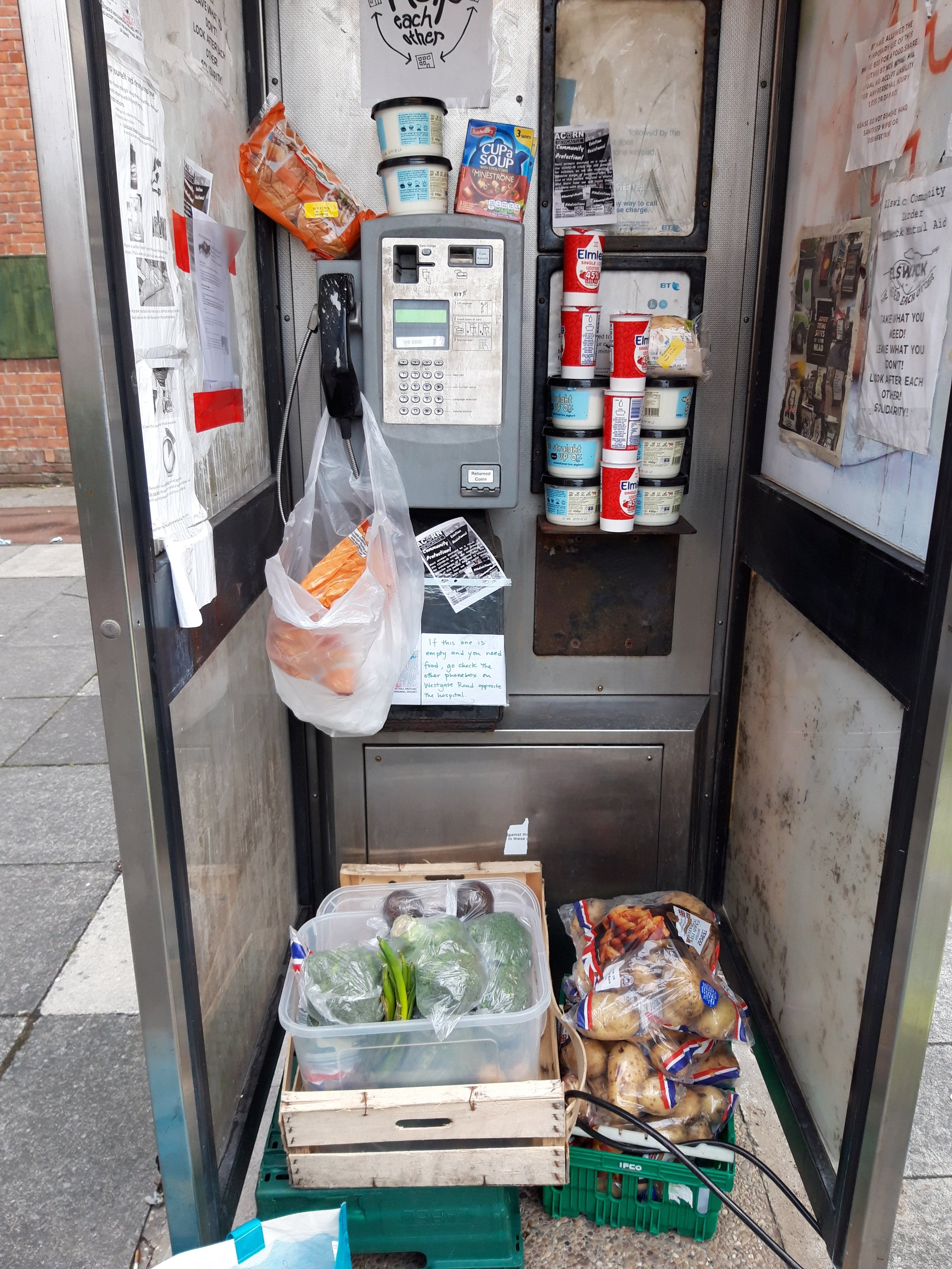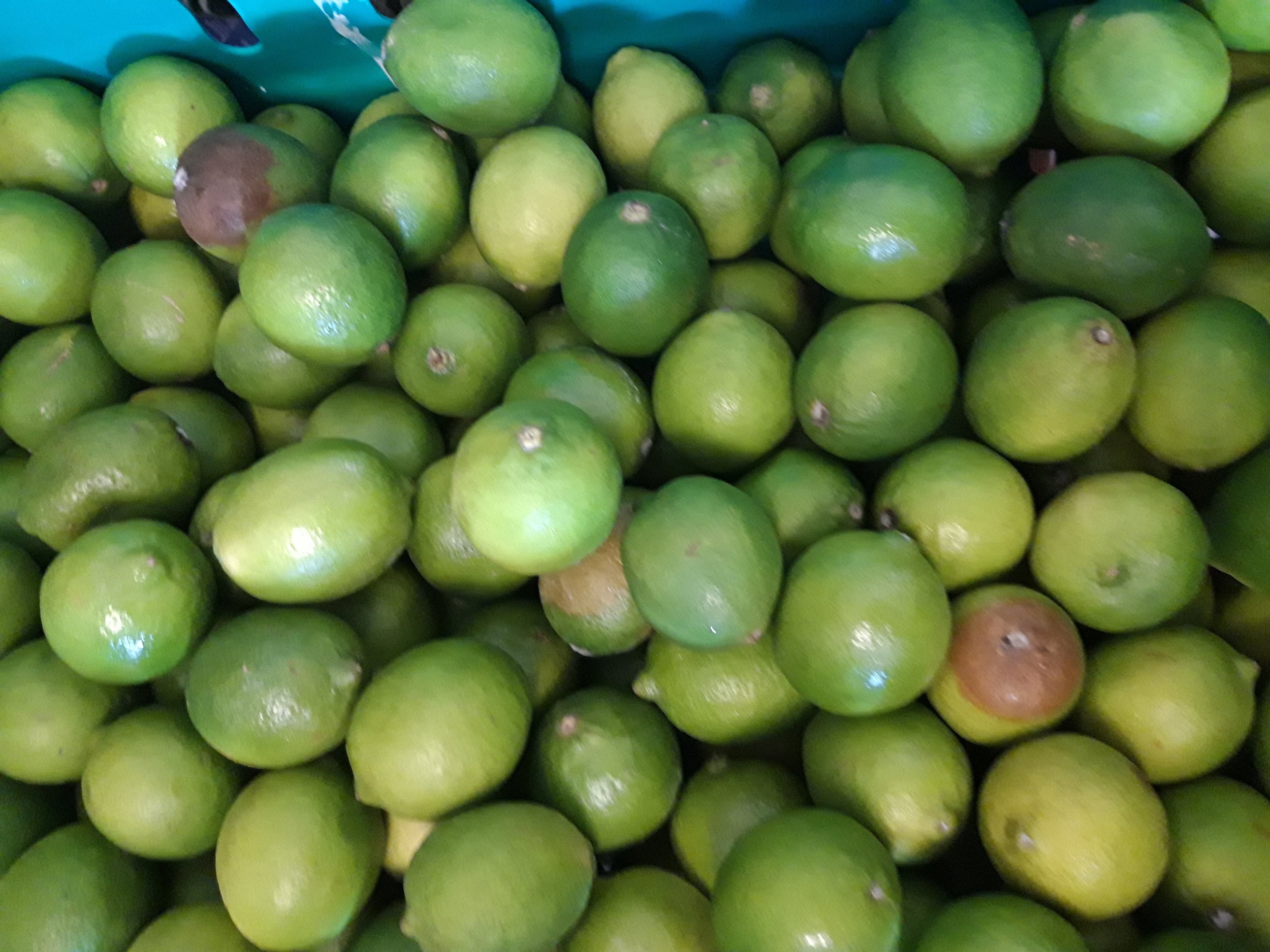
This full sized replica of a BT KX 100 phonebox is clad in reclaimed cardboard from the artist’s neighbourhood.
Serving as a physical archive of the work of two mutual aid groups which emerged in March 2020 in the West End of Newcastle-upon-Tyne in response to the covid-19 pandemic crisis, it contains material culture and images created as part of the work of these groups. The piece aims to share the experience of mutual aid in multiple ways so that what has happened in the West End since March 2020 cannot be erased or misrepresented.
Since the groups have organised to provide food via two BT phoneboxes in the neighbourhood which act as community larders, the structure, the crates, and the food inside the crates mimic the actual phoneboxes into which food is placed every day by members of the groups. The collage inside echoes the transient artwork and carefully-designed informational posters which members of the groups have put inside the phoneboxes throughout the period.
The groups are non-hierarchical and make no distinction between giver and receiver, with the greatest proportion of people occupying both roles. In addition to providing food in phoneboxes, as the collage displays, the groups also have organised events, given out school lunches, prepared and delivered food parcels, and each also run a solidarity fund, one of the few, if not the only no-questions-asked forms of financial support available in the region.
Including images of the artist’s partner and child cooking for events, bagging up vegetables, and playing in food crates, it also shows an intimate picture of the day-to-day life of mutual aid in the first five months of the pandemic crisis in the UK. The pictures of graffiti in back alleys, weeds coming through cracks in the walls, and shots of the green spaces of the West End display the artist’s love for her community, even its grittier sides.
The pictures of food, multi-lingual flyers, event posters, receipts, screenshots of the groups’ reimbursement systems and Facebook posts, and print-outs of tweets are intermingled with photos and examples of artwork made by people of all ages in the neighbourhood. These artworks were created at an open-air picnic arranged by the mutual aid groups and bear the marks of a brief rain that fell on that otherwise sunny day. Those which are photographed were created specifically to make visible the otherwise often invisible bonds of solidarity within the neighbourhood because they were made to be given out anonymously to others living there.
The food inside the crate is taken from the over 180kg quantity of food which goes into the phoneboxes each week. This food comes from a variety of sources, including people making donations from the small food parcels they receive from local charities. The crates are from among the mutual aid group’s stock of crates for storing food. The labels have been created by the artist with the hope that these will capture some of the feeling of invisible and unconstraining love that is the basis of the solidarity in this complex and incredibly diverse urban setting.
This work was funded by the NewBridge Project as part of the For Solidarity project, in partnership with the Solidarity Economy Association. More info: For Solidarity











